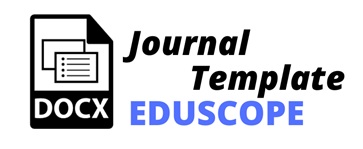Sega (Speaking English Games) Media for Mentally Disable Student of Junior High School At SLB MUHAMMADIYAH JOMBANG
DOI:
https://doi.org/10.32764/eduscope.v9i2.3963Abstract
ABSTRACT
The aim of this research is to design learning media named SEGA (Speaking English Games) to help mentally disable students of 7thgrade Junior High School at SLB Muhammadiyah Jombang. This research focuses on student’s vocabulary mastery by using games as learning media. The research method used is Research and Development (R&D). This development used ADDIE model which consist of: Analysis, Design, Development, Implementation, and Evaluation. The research result was got through the process of need analysis, material validation, media validation, and students’ responses. To collect the data, researcher used observation, interviews, and questionnaire. The result average material validation got 92% and it was in “Very Good” category, while the result average media validation got 92,5% and it was in “Very Good” category. Subject of this research was mentally disable students in 7thgrade Junior High School at SLB Muhammadiyah Jombang. The students’ responses of tried out result got 95% was in “Very Good” category. Based on those result, it can be concluded that SEGA (Speaking Eglish Games) learning media is feasible or deserved to be used as learning media to improve students’ vocabulary mastery.
KEYWORDS: Learning media, SEGA, mentally disable student, Junior high
ABSTRAK
Tujuan penelitian ini adalah merancang media pembelajaran SEGA (Speaking English Games) untuk membantu siswa tuna grahita kelas 7 SMP di SLB Muhammadiyah Jombang. Penelitian ini berfokus pada penguasaan kosakata siswa dengan menggunakan permainan sebagai media pembelajaran. Metode penelitian yang digunakan adalah Research and Development (R&D). Pengembangan ini menggunakan model ADDIE yang terdiri dari: Analisis, Desain, Pengembangan, Implementasi, dan Evaluasi. Hasil penelitian diperoleh melalui proses analisis kebutuhan, validasi materi, validasi media, dan respon siswa. Untuk mengumpulkan data, peneliti menggunakan observasi, wawancara, dan angket. Rata-rata hasil validasi materi memperoleh nilai sebesar 92% dan masuk dalam kategori “Sangat Baik”, sedangkan rata-rata hasil validasi media memperoleh nilai sebesar 92,5% dan masuk dalam kategori “Sangat Baik”. Subyek penelitian ini adalah siswa tunagrahita kelas VII SMP di SLB Muhammadiyah Jombang. Respon siswa terhadap hasil uji coba diperoleh 95% berada pada kategori “Sangat Baik”. Berdasarkan hasil tersebut dapat disimpulkan bahwa media pembelajaran SEGA (Speaking Eglish Games) layak atau layak digunakan sebagai media pembelajaran untuk meningkatkan penguasaan kosakata siswa.
KATA KUNCI: Media pembelajaran, SEGA, Siswa Tunagrahita, SMP








